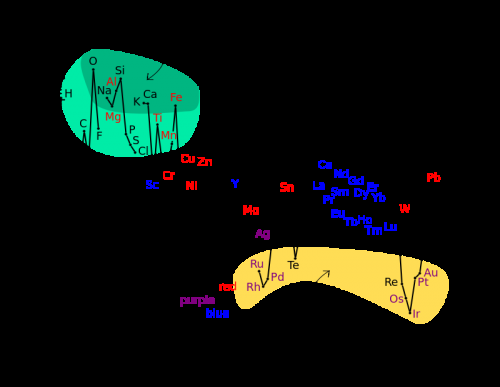January 16, 2015 report
Researchers find salmon semen can be used to extract rare earth elements from waste

(Phys.org)—A team of researchers affiliated with several academic/research facilities in Japan has found that dried salmon semen can be used to extract rare earth elements (REEs) from liquid ore waste. In their paper published in the journal PLOS ONE, the team describes how they came up with the idea, the process they used, and the prospects of using their technique in commercial applications.
Currently, the process of retrieving REEs from ore waste involves the use of toxic and sometimes radioactive chemicals which often wind up in the environment causing problems. It is expensive too, because a special type of resin must be used. For that reason, scientists have been looking for other ways to get the job done. Back in 2010, another team of researchers discovered that phosphate on the surface of some types of bacteria attracted REEs allowing for collection of REEs—and it was ten times as efficient as current methods. The drawback, of course, was the difficulty in growing cultures for use on an industrial scale. In this new effort, the research team looked at dried salmon semen, known in Japan as milt, as a possible replacement.
Milt has phosphate in the sperm DNA, which the researchers reasoned, should attract REEs the same way that bacteria did in the early experiment. To find out, they poured the dry milt into a beaker that already contained a rare earth solution. Subsequent analysis revealed that the milt did indeed pull REEs from the solution, absorbing them. Putting the results in a centrifuge allowed the researchers to extract the REEs for repurposing. Notably, the process was able to extract the very expensive thulium and lutetium.
The team reports that initial tests indicate that enhancing the milt with certain chemicals might allow the process to work with other types of REEs.
Before milt can be used for REE extraction on a commercial scale, however, an economically viable process would have to be put in place to capture it from commercial fisheries, which typically throw the stuff in the trash, and then to process it. The team notes that in its dried form, milt is very easily stored.
More information: Takahashi Y, Kondo K, Miyaji A, Watanabe Y, Fan Q, et al. (2014) Recovery and Separation of Rare Earth Elements Using Salmon Milt. PLoS ONE 9(12): e114858. DOI: 10.1371/journal.pone.0114858
Abstract
Recycling rare earth elements (REEs) used in advanced materials such as Nd magnets is important for the efficient use of REE resources when the supply of several REEs is limited. In this work, the feasibility of using salmon milt for REE recovery and separation was examined, along with the identification of the binding site of REEs in salmon milt. Results showed that (i) salmon milt has a sufficiently high affinity to adsorb REEs and (ii) the adsorption capacity of the milt is 1.04 mEq/g, which is comparable with that of commercial cation exchange resin. Heavier REEs have higher affinity for milt. A comparison of stability constants and adsorption patterns of REEs discussed in the literature suggests that the phosphate is responsible for the adsorption of REE in milt. The results were supported by dysprosium (Dy) and lutetium (Lu) LIII-edge extended x-ray absorption fine structure (EXAFS) spectroscopy. The REE-P shell was identified for the second neighboring atom, which shows the importance of the phosphate site as REE binding sites. The comparison of REE adsorption pattern and EXAFS results between the milt system and other adsorbent systems (cellulose phosphate, Ln-resin, bacteria, and DNA-filter hybrid) revealed that the coordination number of phosphate is correlated with the slope of the REE pattern. The separation column loaded with milt was tested to separate REE for the practical use of salmon milt for the recovery and separation of REE. However, water did not flow through the column possibly because of the hydrophobicity of the milt. Thus, sequential adsorption–desorption approach using a batch-type method was applied for the separation of REE. As an example of the practical applications of REE separation, Nd and Fe(III) were successfully separated from a synthetic solution of Nd magnet waste by a batch-type method using salmon milt.
Journal information: PLoS ONE
© 2015 Phys.org


















